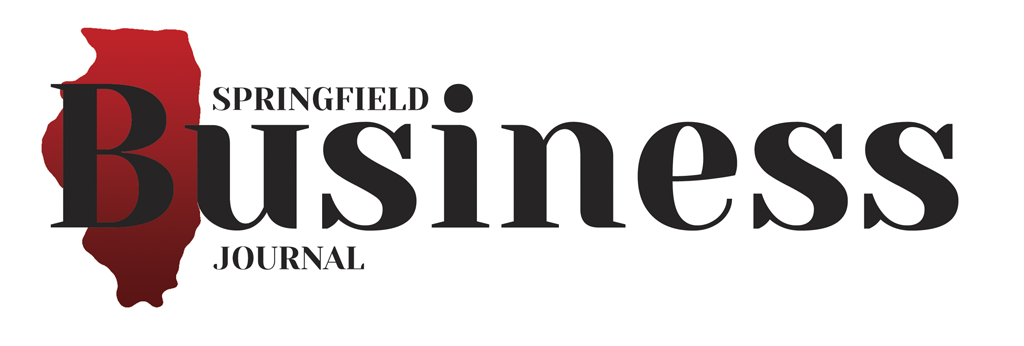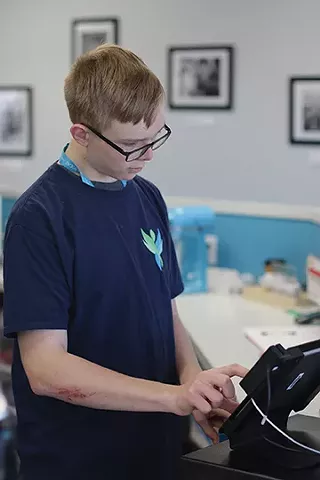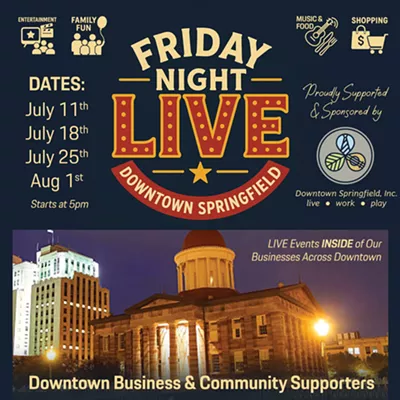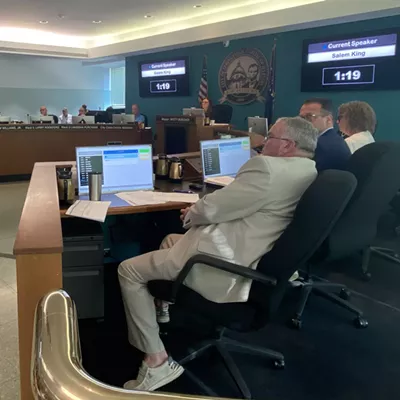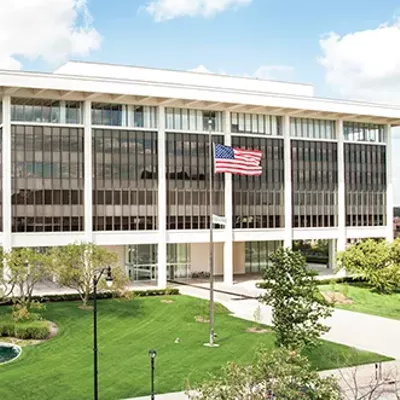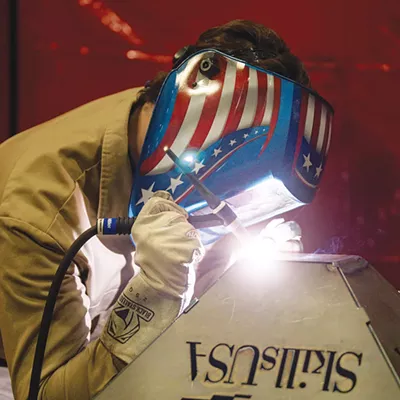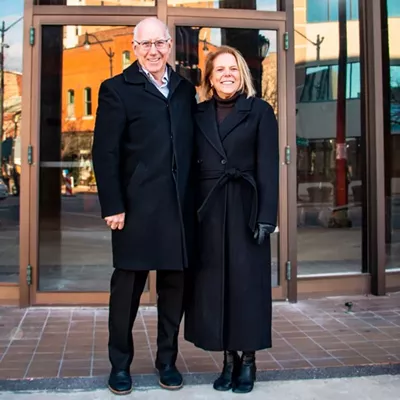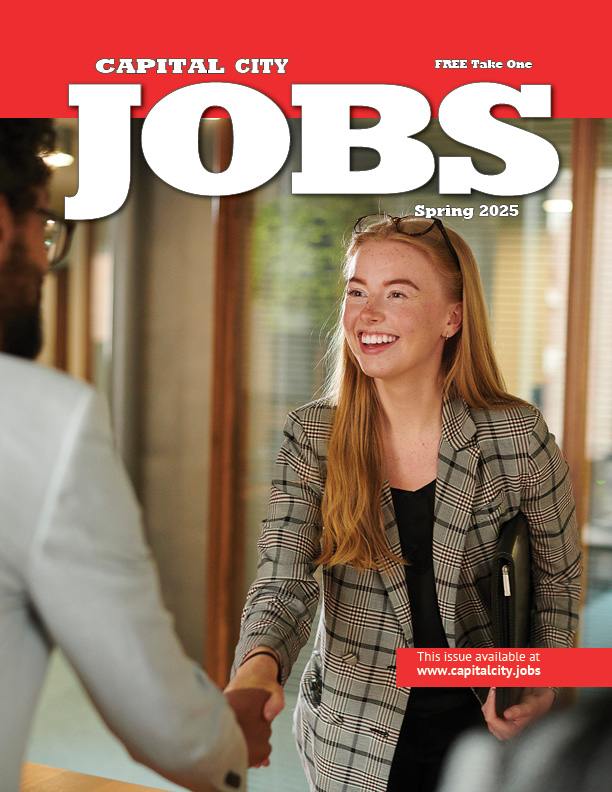By Patrick Yeagle
A young worker circles pictures of bread, meat, cheese and toppings on a colorful laminated sheet as he takes a customer’s order at Hope Inclusion Café and Play. It’s one of the very few clues that this is a special place, and it’s supposed to be that way.
The cafe opened on May 23, primarily as a place for people with developmental disabilities to learn job skills. However, it’s also a place for the public to learn something important.
Located at 3252 Ginger Creek Dr., the café is a vocational training program and an extension of The Hope Institute for Children and Families, which celebrates its 60th anniversary this year. The organization specializes in helping young people with autism and similar conditions succeed, focusing especially on students whose families have had difficulty meeting their special needs.
Hope Inclusion Café and Play, located off of Koke Mill Road, is the second restaurant of its kind started by The Hope Institute, following the establishment of Noll Café at the organization’s headquarters in 2010. The new café teaches students how to take food orders, navigate health codes, operate restaurant-grade machinery, bus tables and more – the kind of skills required to work in the food service industry or related jobs.
“It’s an opportunity for the students to have real-world job training and experience,” said Clint Paul, executive director of Hope. “It’s kind of an extension of our classroom.” Skylar Tierney, director of vocational and educational professional development at Hope, says the cafe was designed to operate like any other restaurant, with only a few small changes like the pictorial menu, which simplifies order taking.
“Every single modification we’ve made is really the same as what most restaurants have done or do,” he said. “I like the fact that we can teach our students in this environment, assess their skills and then develop jobs for them.”
The café already has several partnerships with other establishments like the Sangamo Club and Horace Mann to find placements for workers.
“I can go to another business and say, ‘This student is ready. He’s battle-tested and proven,’ ” Tierney said. Amanda Brott, chief operating officer for The Hope Institute, says students at Hope have typically had behavioral difficulty in other environments, but working at the café gives them focus and confidence.
“What our staff is able to do is hone in on their skills and build upon that,” Brott said. “Through reinforcement, these kids now are right in the middle of their community, serving the public, and they’re successful. With that comes pride. Our kids have pride in learning these skills.”
Brott says one student who works at the cafe was recently able to prepare a meal for his family during a home visit, using skills learned on the job.
“His mom was blown away,” Brott said. “She said, ‘This is not a future that we ever thought could be possible.’ ”
In addition to vocational training, the café offers a sensory-friendly play area with soft surfaces and sound-dampening.
“We wanted to design something that was inviting to everybody, to come and experience this with us and bring their children of all abilities,” said Clint Paul, Hope’s executive director.
Beyond providing job training and being a welcoming environment, Paul says the café is meant to help the public become more familiar with people who have disabilities. That helps remove barriers to success for people with disabilities.
“Part of the goal is to push out to the community and say that people are people,” Paul said, “no matter who you are, no matter what you look like, with or without a disability.”
